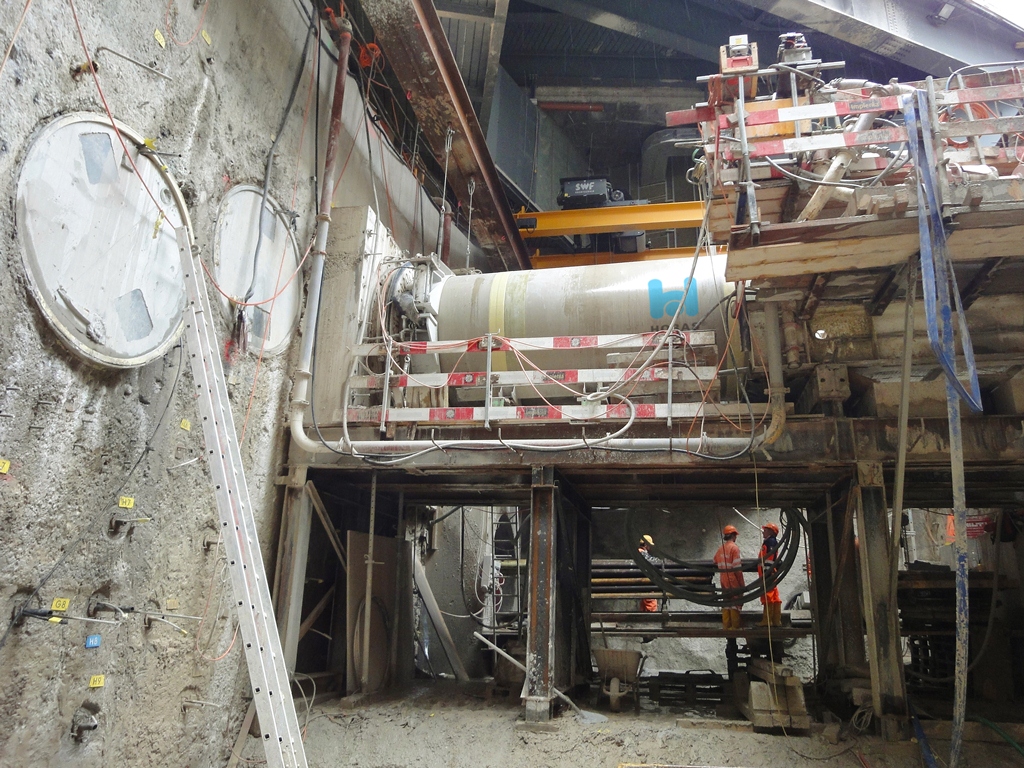
HOBAS Pipes as Auxiliary Static Support and Drainage System for the new Intra-Urban Train Tunnel, CH
How would you connect two train stations under a densely populated city where you are neither allowed to disturb inhabitants nor to disrupt traffic, and you cannot move the historic buildings “standing in the way“? In Zurich, the capital of Switzerland for example, HOBAS Jacking Pipes were chosen as auxiliary static construction that reliably helps support the urban district above. The tunnel for the railway, which is drained with HOBAS Pipes, was subsequently bored underneath this construction.
Zurich is the economic center and motor of Switzerland. Its main station is an important junction at which about 1800 trains transport approximately 340,000 passengers in and out per day. By 2020 the number is expected to have increased to 500,000 passengers although the capacity of the rails and facilities however is already fully exploited. An extensive construction project was therefore launched to connect the two stations Altstetten and Oerlikon. The main part of it is the establishment of a through station under the main station and the 4.8 km-long Weinberg tunnel – HOBAS playing a decisive role for the latter.
The intra-urban Weinberg tunnel posed quite a challenge to the construction company. Since the clearance beneath the surface in the area of the main station is quite small, a static pipe construction had to be jacked to prevent the buildings and streets above from subsiding before the tunnel could be bored. “According to the quotation request, the auxiliary pipeline should have actually been realized with concrete or steel pipes. When the party in charge heard about the outstanding properties of HOBAS CC-GRP Pipes, they were soon convinced that this composite is the best material for the project”, explains Cornel Sennhauser, Sales Manager at HOBAS Switzerland. Seven pipe strings, six of which were HOBAS De 1940 Pipes were jacked in a semi-circle over the tunnel’s route and partly under the Limmat River. Having pulled the machines back through the line into the starting pit the pipeline was filled with concrete. The static requirements for building the 11.27 m in diameter train tunnel were now fulfilled.
This cautious safety measure was necessary to minimize the subsidence of structures such as the train station bridge, the Coop-building and the train station embankment which is heavily frequented by bus, tram and private transport. Apart from this, inhabitants should barely notice the construction works.
The Weinberg tunnel should be opened for train service towards the end of 2013 and will decisively upgrade Zurich’s infrastructure. Another four-track through station Löwenstraße is erected paralleling the existing through station approximately 16 m beneath the tracks 4-9. It is a great challenge to implement a large-scale project as such without disrupting the busy train traffic. With thorough planning and construction companies that work hand in hand, Switzerland can however soon be proud of their fully renewed train hub.
More information about this application
PROJECT DETAILS
| Project ID: [9697] | |
| Country: | Switzerland |
| City: | Zürich |
| Year: | 2009 |
| Application: | Other Pipelines |
| Installation: | Microtunneling |
| Technology: | Hobas |
| Total Length: | 816 m |
| Nominal Diameter DN: | 1940 mm |
| Nominal Pressure PN: | 1 bar |
| Nominal Stiffness SN: | 32000 | 40000 N/m2 |
